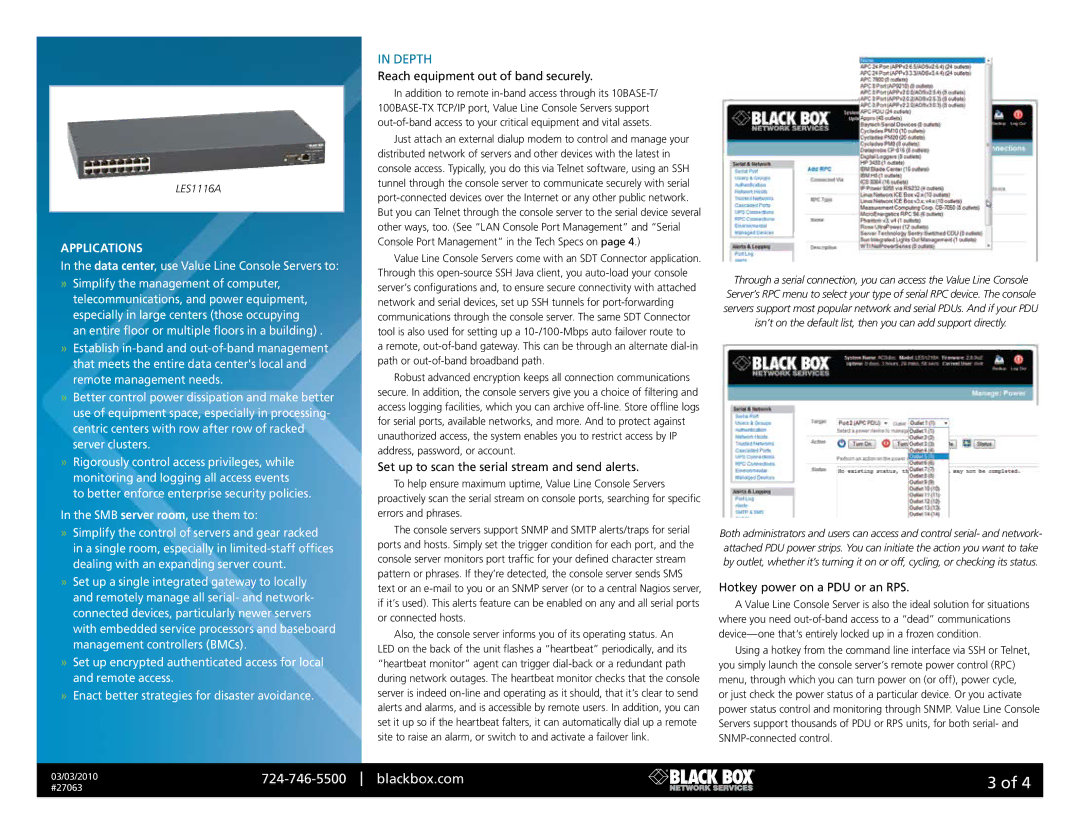1108 Console Server specifications
The Black Box 1108 Console Server is a versatile and robust networking solution designed for remote management of devices in data centers, server rooms, and branch offices. It serves as a vital tool for IT professionals who require secure access to serial devices, routers, switches, and servers over IP networks.One of the main features of the Black Box 1108 Console Server is its ability to support multiple serial connections. It comes equipped with eight serial ports, allowing simultaneous access to multiple devices. This capability is particularly beneficial for network administrators who need to manage several systems at once, minimizing downtime and increasing operational efficiency.
The device leverages advanced technologies to enhance connectivity and management. The console server can be accessed via various protocols, including SSH and Telnet, ensuring secure communications over the network. Additionally, it supports secure Socket Layer (SSL) encryption, which further safeguards data transmissions from unauthorized access.
Another distinctive characteristic of the Black Box 1108 is its advanced power management features. The console server allows for remote power cycling of connected devices, enabling administrators to reboot equipment without needing physical access. This feature greatly simplifies network management tasks and improves system availability.
Ease of use is a critical aspect of the 1108 Console Server. It includes a web-based graphical user interface that provides intuitive navigation for device management and configuration. Additionally, SNMP (Simple Network Management Protocol) support allows for seamless integration into existing network monitoring systems, making it easier to keep track of system health and performance.
The Black Box 1108 also emphasizes durability and reliability, constructed to withstand the challenging conditions often found in data center environments. With a compact rack-mountable design, it fits seamlessly into standard server racks while providing excellent heat dissipation to maintain optimal operating temperatures.
In conclusion, the Black Box 1108 Console Server embodies a powerful solution for remote management within complex network environments. Its combination of multi-port connectivity, secure access protocols, remote power capabilities, user-friendly interface, and robust construction makes it an invaluable tool for IT professionals seeking to optimize their network operations. With the Black Box 1108, organizations can enhance their technical capabilities, ensure consistent uptime, and manage their infrastructure more effectively.

